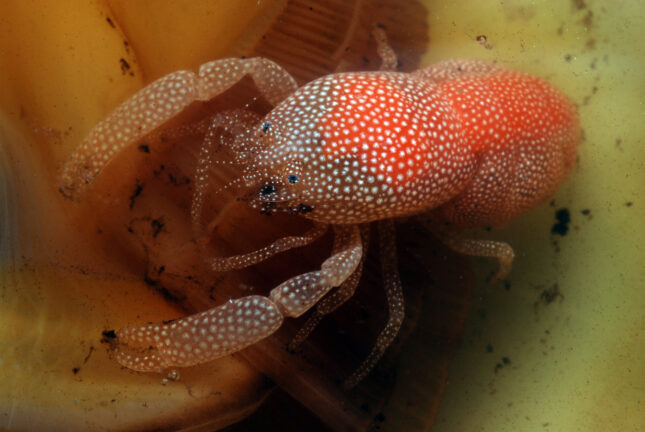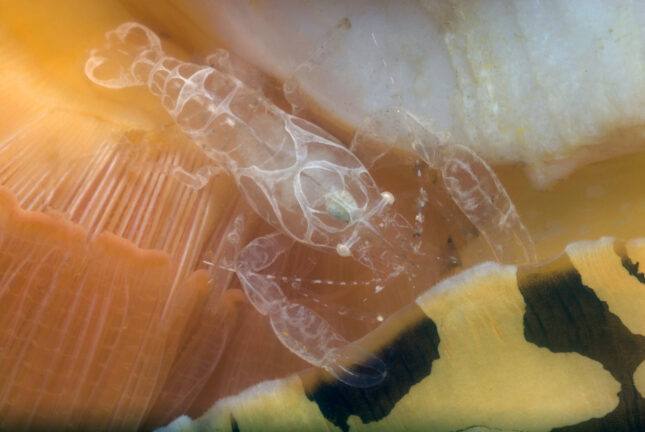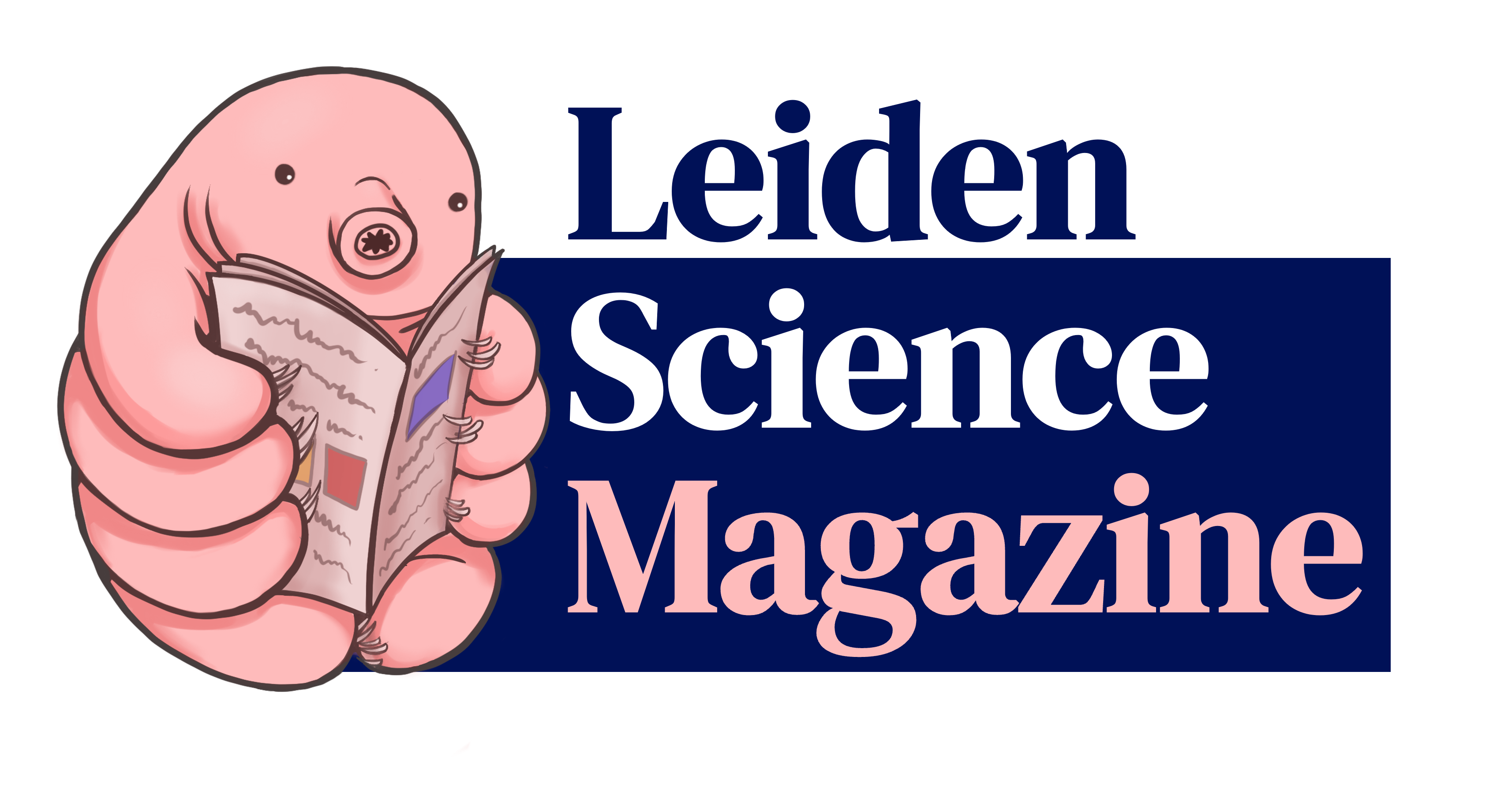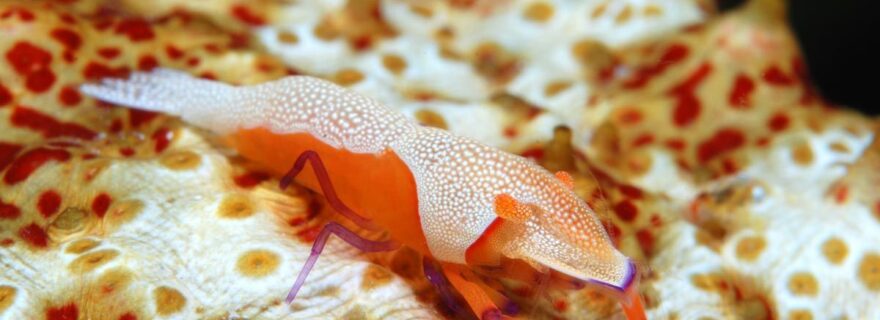A partnership under the sea
During the course Popular Science Writing, students are asked to write an article based on a scientific talk, a practice that is close to our hearts. This week, an article about the emperor shrimp by Belana van Wijngaarden.
The Indian Ocean. A few metres under the surface. A nudibranch is slowly moving along the rocks. This beautiful red-and-white spotted animal has picked up a hitchhiker on the way to its next meal. From the sea slug’s back, an emperor shrimp (Zenopontonia rex) is enjoying the walking buffet: the food will just float past and all the shrimp needs to do is shove it in. It has a pattern similar to the slug’s and is hardly visible as it toddles across the slug. The shrimp and slug sharing a look is no coincidence. In fact, it’s not uncommon for one species to adjust to another. And as it turns out, this coexistence between species has an influence on biodiversity.


Werner de Gier is a PhD student at Naturalis Biodiversity Center, and part of a team researching shrimp living in or on other animals. He is fascinated by the way these remarkable creatures have adapted. De Gier: “Some shrimp have special tassels on their pincers, to scrape up slime. Species that live on another animal won’t have these tassels, but ones that live inside another will.”
To illustrate, De Gier describes the appearance of two species of shrimp living on opposite sides of the planet. “They have no genealogical relationship, but they do look a lot alike.’ According to De Gier, it’s because they both live alongside the same species. To stand out as little as possible, the shrimp have – completely separately – developed the same characteristics. This extraordinary adaptability can even be how entirely new species come to be.
Underwater rainforest
A team from the University of Mississippi has recently proven that biodiversity in coral reefs is highly dependent on coexistence between various animals. Shrimp, as well as many other species living on the reef, adapt due to long-lasting cohabitation. As the years go on, this causes so much change that these animals can no longer be gathered under the original species. It’s partly because of this that there is no place on earth where biodiversity is greater than the coral reefs of the Indian Ocean: the place is teeming with life in every shape and size. Not even the tropical rainforest can compete with these true underwater hotspots. But every rose has its thorn, and every high tide must ebb: acclimating to one another has its risks.


The photographs in this article are taken by Dr. Charles Fransen, researcher at Naturalis, Werner's supervisor, and an expert in the field. Last May, De Gier and Fransen have published a study on the two species not mentioned in the story.
Jenga
The Mississippi team has concluded that the disruption of existing cohabitation by things such as climate change leads to a fast decline in biodiversity. One species’ fate is connected to another’s, after all. It’s comparable to the wooden tower of the game Jenga. Imagine this: the bottom layer consists of only two blocks, on which the whole tower rests. These two blocks represent the two coexisting species. If the living conditions change, it’s possible for one half of this duo to disappear: one of those bottom blocks is removed from the tower. The result will be either a very unstable but still standing tower, or a big pile of wooden blocks.
Plenty of fish in the sea?
We know of forms of cohabitation where species aren’t dependent on each other to survive: the tower will remain standing. For other forms, at least one of the two animals is incapable of surviving without the other. So which is the case for shrimp? “Some shrimp are extremely picky in their choice of cohabitation partner. Others live on starfish as well sea urchins and sea cucumbers, for example,” De Gier explains. “Obviously, the last group has a better chance at survival in the short term. When one species falls away, they simply pick out another. In the longer term, however, we see that picky shrimp develop new forms of cohabitation, from which new species can arise.”
As for the shrimp with whom we started this article: they can survive just fine without a sea slug around. But the tiny creature prefers riding to walking. Therefore, it is in both animals’ best interest if the little shrimp can enjoy its first class seat for a long time to come.





0 Comments
Add a comment